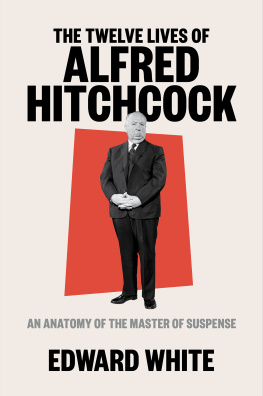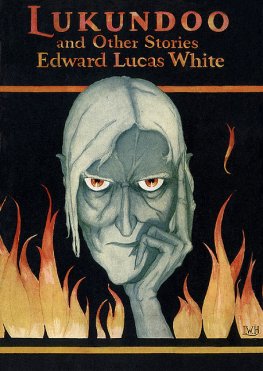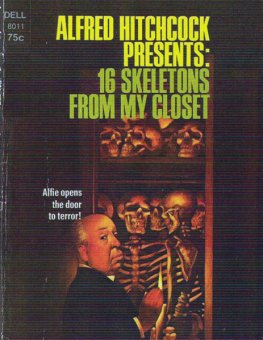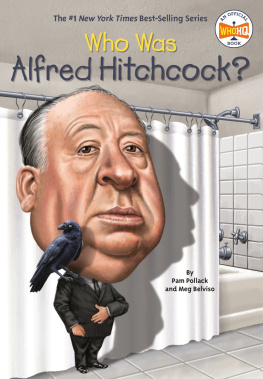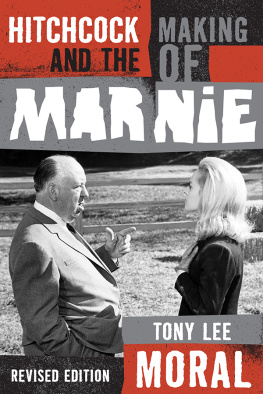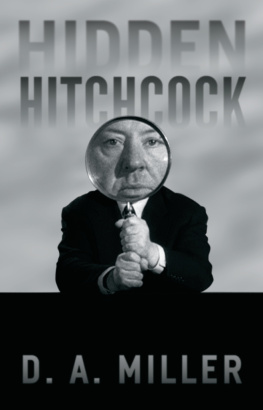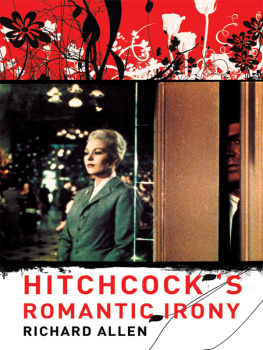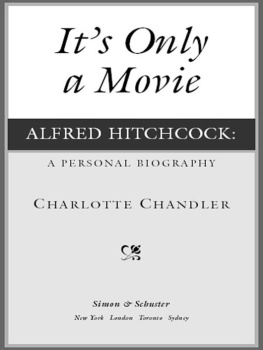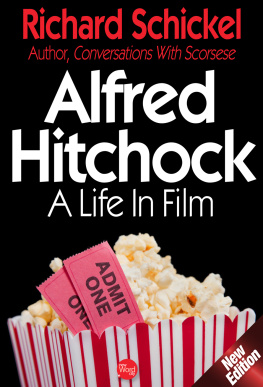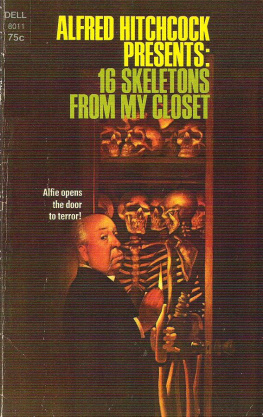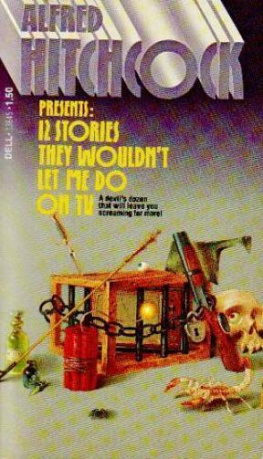Edward White - The Twelve Lives of Alfred Hitchcock
Here you can read online Edward White - The Twelve Lives of Alfred Hitchcock full text of the book (entire story) in english for free. Download pdf and epub, get meaning, cover and reviews about this ebook. publisher: W. W. Norton & Company, genre: Detective and thriller. Description of the work, (preface) as well as reviews are available. Best literature library LitArk.com created for fans of good reading and offers a wide selection of genres:
Romance novel
Science fiction
Adventure
Detective
Science
History
Home and family
Prose
Art
Politics
Computer
Non-fiction
Religion
Business
Children
Humor
Choose a favorite category and find really read worthwhile books. Enjoy immersion in the world of imagination, feel the emotions of the characters or learn something new for yourself, make an fascinating discovery.
- Book:The Twelve Lives of Alfred Hitchcock
- Author:
- Publisher:W. W. Norton & Company
- Genre:
- Rating:5 / 5
- Favourites:Add to favourites
- Your mark:
- 100
- 1
- 2
- 3
- 4
- 5
The Twelve Lives of Alfred Hitchcock: summary, description and annotation
We offer to read an annotation, description, summary or preface (depends on what the author of the book "The Twelve Lives of Alfred Hitchcock" wrote himself). If you haven't found the necessary information about the book — write in the comments, we will try to find it.
The Twelve Lives of Alfred Hitchcock — read online for free the complete book (whole text) full work
Below is the text of the book, divided by pages. System saving the place of the last page read, allows you to conveniently read the book "The Twelve Lives of Alfred Hitchcock" online for free, without having to search again every time where you left off. Put a bookmark, and you can go to the page where you finished reading at any time.
Font size:
Interval:
Bookmark:

THE
TWELVE
LIVES
OF
ALFRED
HITCHCOCK
An Anatomy of the Master of Suspense
Edward White

W.W. NORTON & COMPANY
Independent Publishers Since 1923
I n the spring of 1921, Alfred Hitchcock began his career in the movies. Some months earlier, he had read that the American production company Famous Players-Lasky was to open a branch in London, his hometown, and was looking to recruit designers of intertitles, the story and dialogue cards for silent films. Having spent the last couple of years designing print advertisements for W.T. Henleys Telegraph Works Company, the movie-mad Hitchcock, barely into his twenties, had skills perfectly suited to the job.
The companys first production was to be an adaptation of a novel, The Sorrows of Satan. Hitchcock obtained a copy of the book, andwith the assistance of some of his advertising colleaguesdesigned intertitles for the proposed film. Immediately, he faced a setback. When he submitted his designs, he was told The Sorrows of Satan had been scrapped. So, away he wentand returned with new designs for the production that had been announced in its stead. Impressed by the boys ingenuity, the bosses decided to try him out on a casual, freelance basis. The money wasnt much, so he moonlighted, continuing his regular job alongside his film work, while slipping his manager a cut of the extra income in return for a blind eye. His first assignments went well enough that Famous Players-Lasky eventually offered him a full-time contract. It appears he left Henleys on April 27, 1921. Electrical cablings loss was world cinemas gain.
The story, told by Hitchcock himself, evinces so much of what would present itself over his sixty-year career in motion pictures. There is his buoyant ambition, his vivid visual imagination, his interest in telling stories with as few words as possible, a reliance on source material, and the use of others to achieve a Hitchcockian end. Perhaps more than anything, in telling the anecdote Hitchcock was depicting himself as he was wont to do: an outsider who navigated obstacles with talent, zeal, and cunning.
Within six years of starting his job at Famous Players-Lasky, the hustling novice was forging a legend. In 1927, Hitchcock became a sensation following the success of his first three films, The Pleasure Garden, The Mountain Eagle, and The Lodger. the way Oscar Wildes was in his plays, and Andy Warhols was in his art. Hitchcock stands alone in the Hollywood canon: a director whose mythology eclipses the brilliance of his myriad classic movies.
Today, Hitchcock is cited as the representative figure of his medium. As the historian Paula Marantz Cohen says, Hitchcocks career provides an economical way of studying the entire history of cinema. His work spans the silent era, talkies, black and white, color, and 3D; expressionism, film noir, and social realism; thrillers, screwball comedy, and horror; the cinema of Weimar Germany, the golden age of Hollywood, the rise of television, and the ferment of the sixties and seventies that gave us Kubrick, Spielberg, and Scorsese.
But the significance of Hitchcock stretches far beyond cinema. In many senses, Hitchcock was the emblematic artist of the twentieth centurynot necessarily the most talented or the most accomplished, but one of vast influence, whose life and genre-straddling, multimedia work vividly illuminate key themes of Western culture from the Roaring Twenties to the Swinging Sixties. A story of Hitchcock is also a story of the emergence of the United States as a cultural behemoth; the insistent rise of feminism; the changing roles of sex, violence, and religion in popular culture; the pervasive influence of psychoanalysis; the growth of advertising and promotion as a cultural force; and the vanishing gap between art and entertainment. He and his work are cultural touchstones, seminal to cinema, television, art, literature, and advertising, as familiar to viewers of The Simpsons as to critics of the Venice Biennale. Anxiety, fear, paranoia, guilt, and shame are the emotional engines of his films; surveillance, conspiracy, distrust of authority, and sexual violence were among his most abiding preoccupations. On both counts, his work speaks with urgency to todays audiences. In the 1960s, his films entered academia in the form of film studies; now, Hitchcock is a subject of inquiry in manifold disciplines: gender studies, queer studies, urban studies, fat studies, religious studies, criminal justice studies. While he lived, he could seem a man out of time, a Victorian relic in the thick of the twentieth century. But, decades after his death, this singular person lives among us in many guises.
This book offers twelve of those lives, twelve close-up portraits of Hitchcock, each from a different angle, each revealing something fundamental about the man, the public entity he crafted, and the mythological creature he has become. This is about the life Hitchcock lived, but also the various roles he performed and inhabited; the versions of himself that he projected, and those that the rest of us have projected on him. Among the dozen diverse incarnations, we will see Hitchcock the irrepressible jester, the lonely and terrified child, the problem-solving innovator, the global citizen who never left London, and the transgressive artist for whom violence and disorder were a creative life force. Throughout the chapters, Hitchcocks peers, those who influenced him, and those who followed in his footsteps will slide in and out of view. An important part of the Hitchcock brand is the idea of Hitchcock the all-powerful creator of his filmic universe. It is both true and not. His talent cannot be denied, but without the intervention of creative collaborators, journalists, publicists, and we, his public, the thing we know as Hitchcock would not exist.
Each of the twelve lives flits across the decades, making connections between Hitchcock young and old. The Hitchcock of popular imagination is dominated by his image at the time of his greatest success in the 1950s and early 1960s. But long before the creepy uncle of Psycho, there had been another Hitchcock, an impudent young urbanite of the Jazz Age who captured interwar London on screen and brilliantly exhibited ideas and impulses at the core of his later, more exalted work. The economist David Galenson once theorized that there are two poles of genius: the prolific, precocious Picasso, and the ruminative, late-blooming Czanne, endlessly retreading the same ground. Hitchcock may be the only major artist of the last one hundred years who could convincingly be used as a model for either.
Paradoxically, but perhaps inevitably, this emblematic figure was a complete one-off. His public image, developed and exploited across multiple media, borrowed from Victorian aesthetes, Edwardian music-hall entertainers, Hollywood moguls, and the European avant-garde. He emerged into the public eye as a distinctively English sort of modernist. Steeped in a national culture of nostalgia and tradition, he pursued innovation and new technology while nudging elements of the taboo, the experimental, and the marginal into the mainstream. An interpreter of the modern and the urban, Hitchcock constantly stressed the importance of technique and process, using the camera, the studio set, and the editing room to play with movement, speed, and time. Like all true modernists, he delighted in undermining shibboleths, and shocking respectable sensibilities. He was a flaneur and a mythmaker, who embraced self-promotion as an end in itself; not just a filmmaker but an impresario, an entertainer, and the creator of spectacle, with his mythology at its center. The bigger that mythology grew, the more Hitchcock used it to tease us, with in-jokes, irony, and self-parody. By the time the cultural revolutions of the 1960s began, the modernist whiz kid had morphed into a wily old cynic on the path of postmodernism.
Next pageFont size:
Interval:
Bookmark:
Similar books «The Twelve Lives of Alfred Hitchcock»
Look at similar books to The Twelve Lives of Alfred Hitchcock. We have selected literature similar in name and meaning in the hope of providing readers with more options to find new, interesting, not yet read works.
Discussion, reviews of the book The Twelve Lives of Alfred Hitchcock and just readers' own opinions. Leave your comments, write what you think about the work, its meaning or the main characters. Specify what exactly you liked and what you didn't like, and why you think so.

